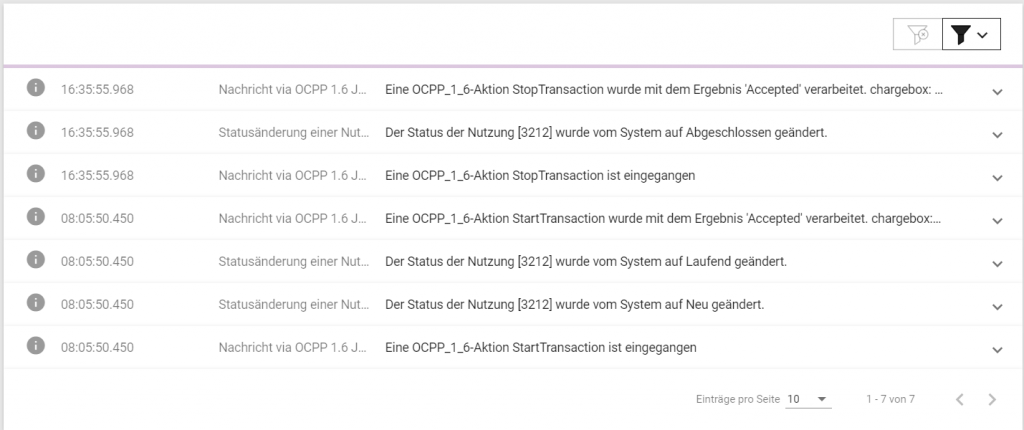Part 1: Basics
Part 2: Measured Values
Part 3: States of the Charging-Process
Part 4: The Big Picture
All smart charging-stations for electric vehicles connect to a so called “charge-point management system” (CPMS). Our CPMS is called “Gridware”. In it’s most basic function it simply is an IoT-platform, recording everything the hardware (i.e. each charging station) is transmitting. The hardware “is always right”: Even if the start of a charing-process is claimed to be on 1.1.1970, it must be recorded unchanged. The back-end must never be allowed to manipulate the data in any way, since any alterations might breach local legislation (like, for example, the German “Standard Weights and Measures Law”).
During the charging-progress the back-end can (co-) decide on the following issues. (It is, however, not always certain that the charging-station will accept the back-end’s decision.)
- Is a given usage-medium authorised for a given charging connector?
- Is a payment-process necessary?
- What kind of measured data should be transmitted?
How much power should be offered by the charging connector offer at a given time (i.e. smart charging)?
- May other users enter a queue?
- Will a a message be sent to the user (telling them, for example, that their car is fully charged)? If so: when?
Usually during the charging-progress, but at the latest at it’s end, Gridware will have collected (and in some cases: calculated) the following data:

State and reason for termination

EVSE-ID and type of the charging connector

Position of charging connector (if available)

Duration of charging-process

Energy and meter readings (authenticated, where applicable)

CO2 saved

Type of electricity and used phases (if known)

Known usage medium (here: RFID-card)

Vehicle (if known to the system)

User (if known).

cost unit
In addition to the cost unit, billing also includes the sales price, the underlying price rule (calculation, VAT rate, currency) and a receipt.
And of course – as it should be for an event-based system – all events that were triggered during the charging process:

Events of a charging process with RFID card without energy management and notifications to user.
Next is Part 2: Measured Values…
